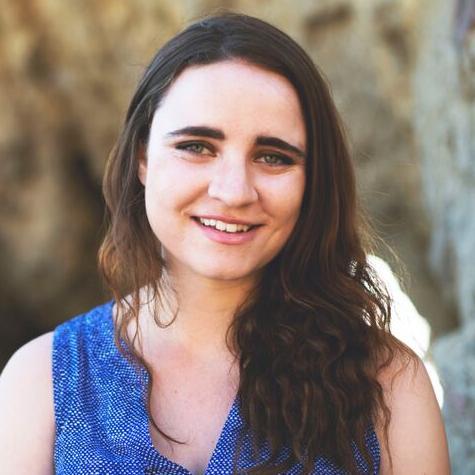Leaders from USC Annenberg’s Annenberg Innovation Lab (AIL) convened Wednesday, June 4 to discuss transmedia and the ways it differs from coast to coast. The two hour discussion, entitled “East Coast Transmedia versus West Coast Transmedia,” was one of the monthly meetups hosted by the group Transmedia Los Angeles, which aims to “bring together the leading minds in the Transmedia continuum to share ideas, experiences, knowledge, techniques and activities.” The evening’s speakers were Geoffrey Long, Technical Director and Research Fellow at USC Annenberg AIL, and Erin Reilly, AIL Creative Director and Research Fellow, who referenced everything from Doctor Who, Transformers, Alan Awake, Buffy, The Harry Potter Alliance, Caine's Arcade and even this Mr. Clean ad campaign during their discussion of transmedia from coast to coast. Long’s interest in transmedia was sparked by his love for comics and games such as Super Mario Brothers, G.I. Joe, and "Transformers" as a kid in the 1980s, and what he saw as the glaring inconsistencies which resulted in a character being killed off in a television cartoon, only to then have that character be still very much alive in the next comic book issue. Long was aware of these inconsistencies even as a kid, he said, but didn't realize that other people were intrigued by the topic too until an article about transmedia by Henry Jenkins appeared in 2003, when Jenkins was teaching at MIT. Jenkins now serves as AIL's Chief Advisor and Senior Research Fellow. “I was like, oh my god, there’s a word for this thing that I’ve been obsessed about for so long,” said Long, citing "Transformers", and specifically the 1987 animated "Transformers" movie, as the media most impactful on his career as a transmedia storyteller. As defined by Jenkins, transmedia storytelling is “a process where integral elements of a fiction get dispersed systematically across multiple delivery channels for the purpose of creating a unified and coordinated entertainment experience. Ideally, each medium makes it own unique contribution to the unfolding of the story.” It is distinctive from franchises, adaptations, and sequels, and is meant to deepen one’s understanding of a single story. “A traditional story may have been told across a film trilogy,” said Long. “But something like a transmedia story might start in animation, go to a movie, go back to animation, go back to a second film, go into a video game, go back to a third film...and if you follow this story across all of these platforms, you will have an experience that is vastly greater than you would have had if you only experienced the movies alone.” Long’s study of transmedia has included a push to define it as its own medium, or meta-medium. He imagines a future in which, when one finishes a television series on Netflix, the streaming service then links the viewer to comics or e-books which are a continuation of the story. Other transmedia scholars, like Reilly, see vast potential in the role transmedia can play, and already has played, in viral marketing, online activism, and entertainment and education strategies for children. One of Reilly's projects is Flotsam, a transmedia play that explores joint media engagement between children and their caregivers.
"While some may look at [transmedia] purely as entertainment value, creating a new lens to tell a story offers a different point of view," said Reilly, whose work with transmedia has been especially focused on engaging children with content across platforms. "With transmedia play, we're really looking at encouraging a new approach to reading and learning and joint media engagement, whether it's sibling-to-sibling, or parent to child." As for the whole West Coast versus East Coast transmedia debate, these distinctions have been formally addressed by transmedia experts such as author Andrea Phillips in A Creator’s Guide to Transmedia, though the differences can be difficult to define. “West Coast, or something called Hollywood or Franchise transmedia, is all about big pieces of media, interwoven lightly” said Long. “East Coast transmedia tends to be more interactive and much more web-centered.” Essentially, West Coast transmedia often encompasses larger pieces of media which could stand on their own, while East Coast transmedia tends to be more tightly interwoven, intricate pieces of content which are heavily reliant upon social media. The differences between transmedia from coast to coast can be intriguing, but some have criticized these distinctions as being faulty or oversimplified. They argue that drawing a line between East and West Coast transmedia can generalize too much and lead to transmedia storytelling happening elsewhere in the world being overlooked. Whether transmedia is East Coast or West Coast style, says Long, what all transmedia has in common is connective tissue, or the way in which stories flow from one media platform to another. And for most transmedia scholars, the end goal of their work is not to divide, but to unite; people, places, stories and media. "In the end, when I think about all these different logics that we're exploring with transmedia--transmedia storytelling, transmedia activism, transmedia branding-- when you put transmedia in a relationship with something else, no matter what that relationship is, the strongest ones are emergent, and social," said Reilly. "And they're an opportunity for us all to learn something from each other."



